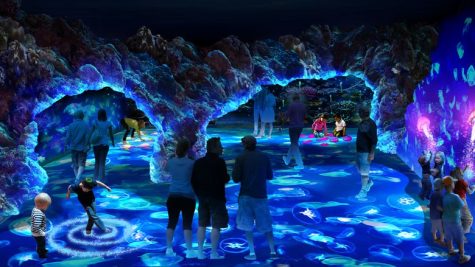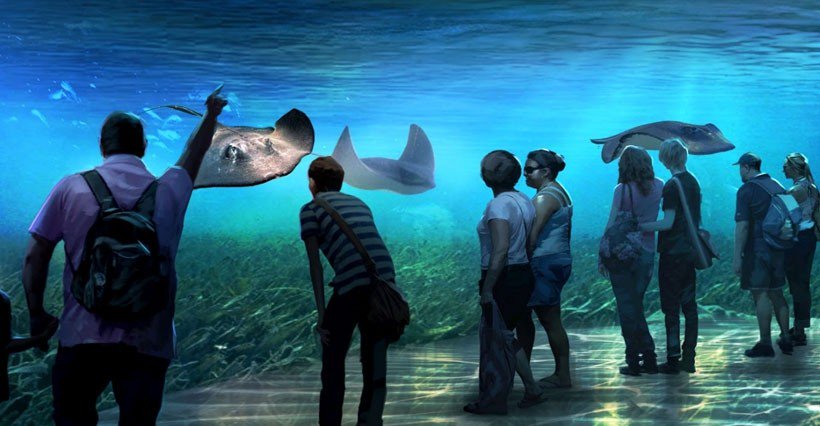A New Way to See the Sea
The National Geographic exhibit titled Encounter: Ocean Odyssey utilizes high definition technology to present an immersive experience, showcasing sea creatures of the ocean and discussing ways in which we can aid their survival. Additionally, proceeds from this exhibit fund marine research and environmental efforts by the National Geographic.
Amid the city buzz of Times Square, visitors enter a dimly lit space, mimicking the sensations of plunging into the ocean depths. Rooms with projected walls, twisting mirror hallways, and faux kelp corridors, come together, creating a marine experience, all without getting wet. The decision to utilize technology, with computerized scenes of sea lions, squid, and whales is a modern approach to the aquarium. Gabrielle, the photographer and sales associate for the exhibit says proudly that the exhibit avoid “exploiting animals for profit,” unlike other ocean life exhibits. “This is like going to an aquarium without risking lives. Here we get to experience the ocean without harming the sea creatures that are already endangered,” she says.

Guides are scattered throughout various rooms to explain various wonders of aquatic life, as well as to point out the role humans play through overfishing and pollution of waters in bringing about the endangerment of marine species, which could eventually lead to the extinction of all animals. There is a well thought out pattern it the sequence of the presentation. The first stage of the exhibit, creates an awe inspiring respect for the majesty of sea life. The goal is to engage the participants and encourage them to appreciate, in fact, love, the ecological balance of aquatic life. The next stage is to create a realization and urgency in recognizing the vulnerability of this life, and educate us in our ability to make some real life changes in the preservation of the environment in our oceans and waters. This is done through a section dedicated to ocean advocacy. Visitors are encouraged to take a pledge on touch-screen monitors, selecting one aspect of their lives to improve upon that will ultimately have positive impact on the ocean. Examples include discontinued use of plastic, or avoiding certain sunscreens containing chemicals that damage coral reefs in the ocean. Mr. Dennis, a visitor of the exhibit, said the National Geographic “brought [ocean awareness] without pounding it into your head…Seeing the data reinforces that we have control over what we can do to the ocean.”
One of my favorite features was the artistic work done by Asher Jay, an environmentalist and artist, illustrating the earth and oceans as pieces of a puzzle and how they interact with one another. Aside from being visually stunning, this artwork highlights the fact that each piece of the earth is intertwined with the whole.Whether you enjoy getting wet or not, it is difficult to maintain a dry eye when confronted with the fact that it is within our power to preserve our oceans and magnificent beings that inhabit it.

Samantha is a passionate journalist and loves writing for The Rampage because it is a window into the life of the student body that honestly reports true...






